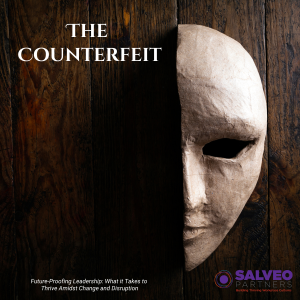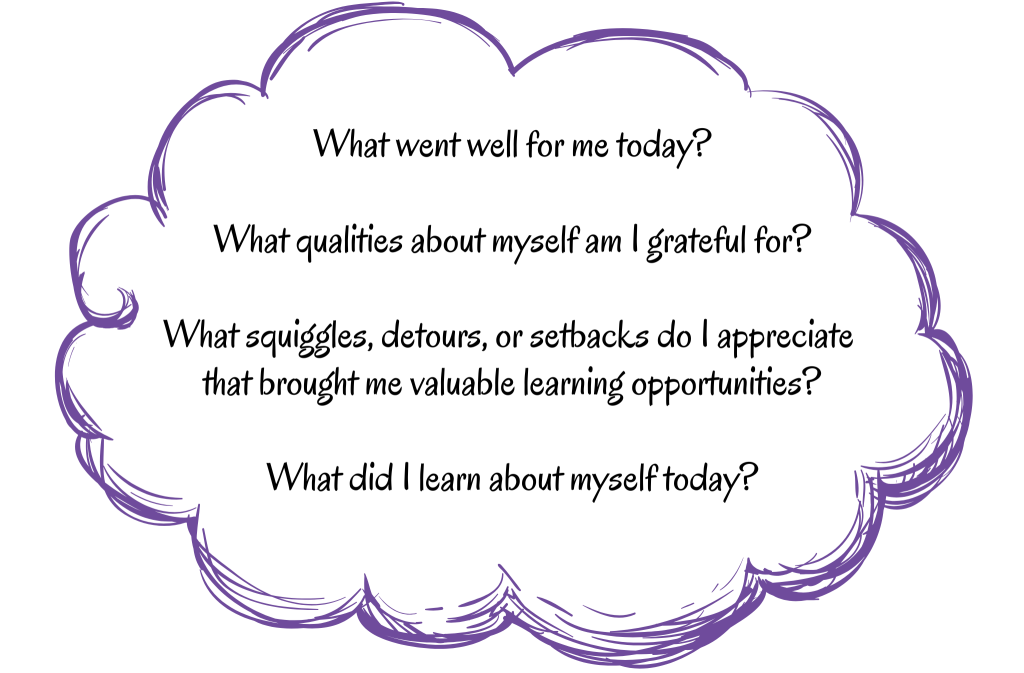In our research with 250 leaders across various industries, one faulty pattern emerged more frequently than any other: the Counterfeit Faulty Program. It was observed in 36% of the leaders in our study.
This post builds on the foundation we introduced in our first blog in the series, Why Leaders Get Stuck: The Stuckness Zone and Faulty Programs. If you haven’t read that one yet, we recommend starting there—it provides the context for how faulty programs are formed, why they keep us stuck, and why upgrading them is essential to future-ready leadership.
At first glance, leaders running the Counterfeit program often appear highly capable—hardworking, composed, even admired by their teams and peers. Yet beneath the polished exterior, many are hiding parts—or even all—of their authentic selves. They’ve learned to project confidence, perfection, or invulnerability to avoid rejection or criticism. While this strategy may provide short-term protection, it takes a toll over time: eroding trust, fueling exhaustion, and preventing genuine connection.
The Counterfeit Faulty Program is about more than workplace behavior. It’s about identity, fear, and the deep human longing for acceptance. And unless it’s recognized and upgraded, it keeps leaders stuck in what we call the Stuckness Zone™—where energy is spent managing appearances rather than fostering meaningful progress.
“You have got to stop apologizing for being who you are because someone may not like it. You were not created to water yourself down to fit the molds of others’ expectations. Nor were you born into this world to follow everyone else without making your own waves. The powerful thing about you is that no one else is like you or could ever be you. So stand out in that. Be everything that you are, and don’t you dare apologize for it.”
— Kayil York, Brave Soul
How the Counterfeit Program Shows Up
The Counterfeit rarely makes headlines—it’s subtle and pervasive. It shows up in the day-to-day behaviors of leaders, often when the stakes are highest:
- Fears vulnerability. They hesitate to ask for help, admit struggles, or show imperfections; instead, they pretend to have it all together.
- Hides authentic self. Leaders withhold parts of themselves, showing only the polished version or who they think others expect them to be, in order to be accepted or respected.
- Overcompensates. They project a polished or “always on” persona to mask their insecurity.
- Compares self to others. Leaders measure themselves against peers and frequently adjust to “fit in.”
One leader explained it this way: “It feels like I’m constantly acting a part—like I’m playing the role of the perfect leader, but it’s not really me.”
This isn’t deception. It’s self-protection. Leaders genuinely believe that revealing their flawed humanness will diminish their credibility or influence.

The Fears Driving the Counterfeit
Underneath the Counterfeit are powerful fears. Leaders worry that if their authentic selves are fully visible, they’ll be judged, rejected, or found wanting.
- Fear of rejection: “If people see the real me, they won’t accept me.”
- Fear of weakness: “If I admit I’m struggling, I’ll lose respect.”
- Fear of failure: “If I’m not perfect, I’ll let people down.”
- Fear of exposure: “If I let down my guard, others will take advantage of me.”
When the Counterfeit is talking, its head trash sounds like:
I can’t let my guard down.
- I don’t want to look weak.
- I’m not enough and have to prove myself/my worth/my value.
- My authentic self doesn’t belong, so I need to pretend or be something other than who I am.
- I’m not as good/talented/experienced/valued as that person.
These fears are deeply human. They stem from early lessons—times when approval depended on performance or perfection—and become unconscious scripts that play out in adulthood.
The Costs of the Counterfeit Program
While the Counterfeit Program may feel protective, its costs are significant.
For Leaders:
- Exhaustion. Constantly performing a role drains energy.
- Isolation. Leaders can feel unseen and disconnected, even in close relationships.
- Chronic self-doubt. No matter the accomplishments, feelings of inadequacy linger.
- Burnout. The pressure to maintain appearances compounds stress and depletion.
For Organizations:
- Erosion of trust. Teams sense when leaders are hiding behind a mask.
- Culture of fear. When leaders avoid vulnerability, employees follow suit.
- Stalled growth. Psychological safety diminishes, which in turn reduces collaboration and innovation.
And there’s a ripple effect. When leaders operate in Counterfeit, they unconsciously signal to their teams that authenticity is unsafe. Meetings become more about image than substance. Innovation stalls because people hesitate to pitch half-formed ideas. Constructive conflict is avoided, and feedback is softened to the point of uselessness. Over time, organizations often start mistaking “harmony” for health, when in fact, it’s a veneer covering silence and disengagement.
Google’s Project Aristotle famously found that psychological safety—the ability to show up authentically without fear of humiliation—was the single biggest factor in high-performing teams. Leaders stuck in the Counterfeit Program unconsciously undermine this foundation required for effectiveness and performance.
As Harvard Business Review put it: “When leaders demonstrate vulnerability, they set the stage for collaboration, learning, and innovation.” (Learning to Lead with Vulnerability, HBR, 2020).
Want to dig deeper? Download our free research paper, Future-Proofing Leadership: What It Takes to Thrive Amidst Change and Disruption, to explore the findings from our study of 250 leaders across industries.
Why We Get in Our Own Way
It’s no accident that the Counterfeit surfaced in more than one-third of the leaders we studied. This program is reinforced by both early conditioning (“be good,” “don’t mess up”) and by modern organizational cultures that sometimes prioritize image management over authenticity.
In our data, Counterfeit most often derails growth feedback, fostering accountability, speaking up with confidence, and emotional regulation—all adaptive goals that require vulnerability, not just new tips or tools.
This explains why so many leaders feel frustrated. They want to grow and often set the right goals—but their inner programming keeps one foot on the brake.
Breaking Free: The Upgrade Process
The good news? The Counterfeit Faulty Program isn’t your destiny. It can be rewritten. The key is not to try harder, but to work differently—by upgrading your inner operating system.
1. Name it
Start by noticing when the Counterfeit is active. When you catch yourself polishing, posturing, or withholding, pause and label it: “That’s the Counterfeit.”
2. Own it
Acknowledge how it shows up for you. What situations trigger it? What self-talk runs in the background? How do you behave when the Counterfeit is in the driver’s seat? Understanding your personal version of the Counterfeit helps loosen its grip.
3. Challenge it (Upgrade)
This step is about rewriting old scripts. Practical ways to start include:
- Replace head trash. Swap lines like “I’m not enough” with “Most people prefer realness and authenticity.” You don’t have to believe it fully yet; practice planting the seed.
- Run mini-experiments. Share one imperfect draft. Admit one small struggle. Ask for help once this week. Collect the data as you do on how others respond and how you feel—almost always, you’ll find a connection, not rejection.
- Practice self-compassion. Kristin Neff’s research shows that leaders who treat themselves kindly are more resilient and more authentic. One thing we’ve found to be helpful with our clients is having them start a self-gratitude journal. And at the end of each day, reflect on the following:

Ultimately, upgrading Counterfeit is about courage. It means deciding that the risk of showing up as yourself is worth more than the safety of staying hidden. The paradox is that what feels like the greatest risk—vulnerability—is also the foundation of the greatest trust.
As Parker Palmer wrote in Let Your Life Speak: “We can only speak the truth we know when we have the courage to be vulnerable. Hiding our authentic selves does not protect us; it imprisons us.”
Moving Beyond the Counterfeit
The Counterfeit Program is one of the most common ways leaders get stuck—but it doesn’t have to define you. By naming, owning, and challenging it, leaders reclaim the energy lost to self-protection and redirect it toward trust, fostering adaptability, and cultivating genuine human connection.
At Salveo Partners, our Courageous Leadership Program is designed to help leaders identify Faulty Programs, like the Counterfeit, rewrite limiting stories, and start showing up with greater authenticity and courage.
What’s Next in This Series
This post is part of our series on unpacking the Faulty Programs. In the next installment, we’ll dive into the Overachiever Faulty Program—which showed up in 35% of leaders—and explore why tying worth to constant achievement often leads to burnout and disconnection.
Our goal is simple: to normalize the messiness of being human, shed light on the invisible patterns holding leaders back, and provide actionable insights to help you (and your organization) thrive in a disruptive world.

Stay HUMAN. Stay connected. Stay safe. Show Up as a Leader.







